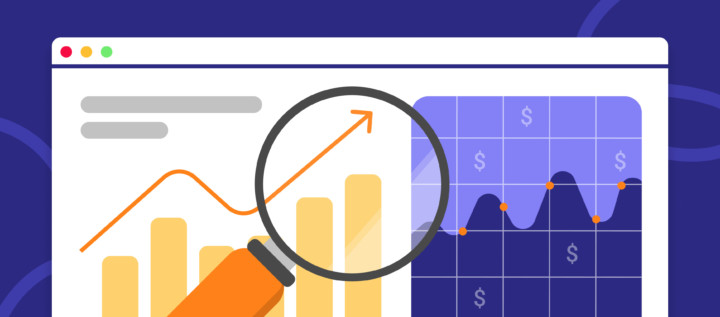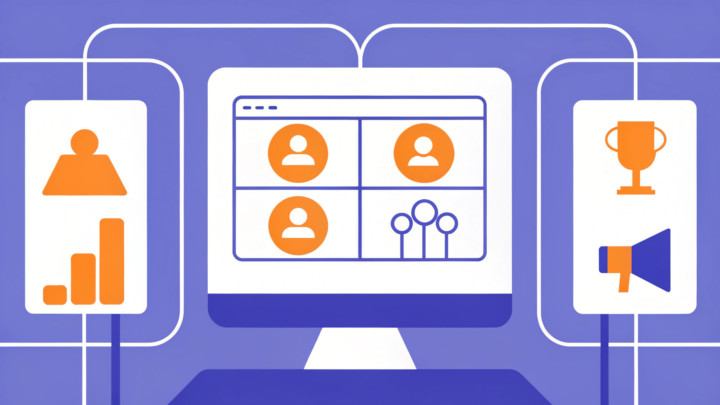8 best inbound marketing services to support your business growth

Overview
The article highlights seven inbound marketing services designed to support business growth by attracting and engaging customers through valuable content and personalized strategies. We understand that running a business can be challenging, and these services aim to alleviate some of that stress. Not only do they enhance lead quality and conversion rates, but they also provide cost-effective solutions.
For instance, Pointe Pest Control is a success story that dramatically reduced its customer acquisition costs, demonstrating the potential impact of these strategies. By implementing these services, you can feel more confident in your marketing efforts and focus on what truly matters — growing your business.
Introduction
In the fast-changing world of digital marketing, we understand that many businesses are feeling overwhelmed. You’re not alone if you find traditional advertising tactics disruptive and ineffective. Today, more and more businesses are discovering the power of inbound marketing services to connect meaningfully with their audiences. This approach is all about attracting customers through valuable content and personalized experiences, rather than bombarding them with unsolicited ads.
By utilizing strategies like SEO, content marketing, and social media engagement, companies can create an inviting atmosphere that fosters trust and loyalty. As the marketing landscape continues to evolve, grasping the subtleties of inbound marketing is crucial for organizations that want to thrive in a competitive marketplace. This journey through inbound marketing not only reveals powerful insights but also transforms how businesses engage with their customers and measure success. So, let’s explore how these strategies can simplify your challenges and help you connect with your audience in a way that feels genuine and effective.
Understanding inbound marketing services
Inbound marketing services are designed with you in mind, aiming to attract clients through valuable content and experiences that truly resonate with their needs and preferences. This approach is a breath of fresh air compared to traditional promotional techniques, which often disrupt potential clients with unwanted advertisements. By aligning marketing strategies with the genuine interests of your audience, you can enhance your inbound marketing efforts, creating a more engaging and effective promotional environment.
These services encompass a variety of tactics, including:
- Content creation
- SEO
- Social media interaction
- Lead cultivation
All thoughtfully crafted to draw individuals in rather than push them away. This shift not only improves customer engagement but also fosters trust and loyalty, which are essential for any successful marketing initiative. It’s important to note that 52% of individuals feel less engaged with content they believe is generated by AI, underscoring the need for authenticity in your inbound strategies.
As David Ehrentreu, Head of Marketing at Shapo.io, highlights, by 2024, digital voice assistants are expected to reach 8.4 billion units. This statistic points to the evolving landscape of promotion and its implications for inbound strategies. Furthermore, the ethical integration of AI tools presents challenges, particularly concerning transparency and responsible practices — especially for Gen Z consumers. Addressing these issues is crucial to maintaining trust and effectiveness in your inbound marketing services.
We understand that navigating these changes can feel overwhelming. But remember, you’re not alone in this journey. Embracing inbound marketing can simplify your promotional efforts, making them more aligned with what your audience truly values. So, take the next step — consider how you can implement these strategies to foster deeper connections with your clients.

Effective lead generation strategies
In 2025, companies striving to flourish in a competitive environment will discover that effective client acquisition strategies, such as inbound marketing services, are vital. Many marketers grapple with the challenge of their product standing out, and one of the most effective ways to enhance visibility is by leveraging SEO. By optimizing websites for search engines, businesses can attract organic traffic and transform visitors into potential prospects.
A significant 50% of B2B companies report receiving higher quality leads from inbound marketing services. This statistic underscores the importance of integrating sophisticated tools into lead generation workflows. Additionally, creating engaging content that resonates with your target audience is essential for successful inbound marketing. This could include blog posts, infographics, or videos that provide value and establish your authority in the market.
Social media platforms are also crucial for reaching potential customers. With a strategic presence on platforms like LinkedIn and Twitter, businesses can connect with their audience and drive traffic to their websites. Tools like Hootsuite and Buffer can help you with social media marketing. Offering incentives, such as free trials, eBooks, or webinars, through inbound marketing services can effectively encourage visitors to share their contact information, resulting in a robust prospect pipeline.
Moreover, utilizing inbound marketing services is vital for reaching specific demographics, ensuring that your promotional efforts are directed at the right audience. Recent statistics show that 53% of companies employing inbound marketing services through automated email campaigns see increased conversions — a testament to the power of personalized marketing. Additionally, approximately 45% of respondents leverage inbound marketing by sending nurturing emails weekly, highlighting the importance of consistent engagement.
As Jordan Park, Marketing Director at Digital Silk, aptly states,
Cold calling has a success rate of 4.8%
emphasizing the necessity for more efficient prospect generation methods. Furthermore, AI tools have democratized account-based marketing, making targeted campaigns more accessible for organizations of all sizes. By harnessing inbound marketing services, companies not only attract qualified prospects but also lay the foundation for nurturing them into loyal clients.

Nurturing leads for higher conversion rates
Nurturing prospects is fundamentally about cultivating relationships with potential customers through personalized communication and targeted content — key elements of inbound marketing services. We understand that successful email campaigns are essential in this journey, acting as a foundation that allows businesses to send customized messages connecting with recipients’ interests and behaviors. With 41% of marketers struggling to follow up with prospects promptly, leveraging inbound marketing services like Dashly becomes crucial for streamlining timely engagements and follow-ups.
Dashly’s omnichannel communication simplifies managing communication with leads across channels (be it website, email, social media, or messengers), ensuring that every lead has a history of all interactions is saved and no message is lost. iThis approach aligns perfectly with top nurturing strategies in inbound marketing, which include consistently sending emails and setting up automated messages based on interactions. As an industry expert puts it,
Trust, familiarity, and fondness mean a potential customer will be more willing to try new products or services.
This highlights the importance of establishing rapport with prospects.
Moreover, investing in CRM tools and prospect scoring systems can significantly enhance opportunity qualification and improve sales alignment through effective inbound marketing services. Dashly’s user behavior tracking allows you to analyze user activity and priorotize leads, first focusing on those who are most likely to convert. Tracking also allows you to personalize your communication, make offers more relevant and appealing. For instance, you’re an online school and see that the lead explored a bunch of pages connected to digital design courses. This way, you save time on some primary qualification and know what to offer.
Additionally, Dashly’s automation features like chatbots and triggered messages helps you get rid of repetitive tasks such as lead qualification and nurturing. You just set up campaigns (they can be omnichannel) to remind of yourself to a lead and nurture them to conversion. A case study on automation in prospect nurturing reveals that 91% of users agree that automation is crucial for successful prospect nurturing, with 74% citing time-saving benefits. By nurturing prospects effectively through personalized messages across channels — supported by Dashly’s comprehensive communication tools, including message sequences and chatbots — marketing teams can significantly enhance their conversion rates, driving growth and success through inbound marketing services.

Automation tools that will raise conversions of your inbound funnel:
Leveraging AI for enhanced marketing efficiency
Incorporating AI into inbound marketing services is reshaping how companies connect with clients and generate leads. We understand that navigating these changes can be overwhelming, especially for small business owners. As of 2023, the AI avatars market was valued at an impressive $5.9 billion, reflecting a significant investment in AI technologies across various sectors. With 20% of marketing teams allocating over 40% of their budgets to AI-powered campaigns, it’s clear that organizations recognize the transformative potential of these tools. That’s why more platofrm start developing their own AI assistants, like Intercom and Salesforce.
AI excels at automating repetitive tasks and providing data-driven insights, which can dramatically enhance operational efficiency. Imagine being able to analyze client behavior seamlessly — this allows marketers to segment audiences effectively and tailor personalized messages. This ensures that the right content reaches the right people at precisely the right time, easing the burden of marketing.
Moreover, AI chatbots are increasingly deployed to engage website visitors, qualify leads, and offer immediate support. By handling these tasks, chatbots free up human resources to focus on more complex challenges that require personal interaction. This shift not only optimizes workflow but also improves customer satisfaction by providing instant assistance. Remember that any tool you implement is supposed to make your life easier.
As Tom Bradbury, a content promotion expert, points out, “This is a compilation of the most up-to-date stats on artificial intelligence (AI),” underscoring the importance of staying informed about AI trends and their implications for promotional practices. A tangible illustration of this is seen in Invoca’s AI-driven solution, which examines phone conversations at scale, allowing marketers to recognize qualified prospects and enhance their strategies.
By embracing AI-driven tools like Dashly, which utilizes chatbots for lead qualification and client engagement, organizations can significantly boost their inbound marketing services. This isn’t just about technology; it’s about achieving impactful results that contribute to sustainable growth. You’re not alone in this journey — embracing these innovations can be a game changer for your business.
The power of omnichannel communication
Omnichannel communication is all about integrating different channels to create a consistent and seamless experience for clients. As we look ahead to 2025, this approach has become essential for organizations eager to connect effectively with their audiences across various touchpoints — think social media, email, chat, and phone. By embracing a unified communication strategy, companies can provide timely and relevant information tailored to each individual’s preferred channel.
This approach not only boosts client satisfaction — consider that 60% of consumers have ended a commercial relationship due to long wait times when trying to reach a representative — but also nurtures loyalty and encourages repeat transactions. Research shows that 73% of consumers engage with multiple channels during their shopping journey, underscoring the importance of a cohesive strategy. Moreover, with 61% of clients contemplating a switch to a competitor after just one negative experience, the pressure is on for businesses to deliver quality service across all channels.
Focusing on client expectations and actively gathering feedback can help alleviate frustrations and adapt to changing needs. A case study titled “Consumer Expectations in Omnichannel Service” reveals that brands successfully implementing omnichannel strategies can meet these expectations, leading to greater satisfaction and loyalty. Therefore, adopting an omnichannel approach can significantly enhance the effectiveness of inbound initiatives, positioning companies to respond to evolving client expectations and foster sustained growth.
There are various instruments that allow you to build an omnichannel strategy. Among them: HubSpot, Dashly, and ActiveCampaign.

Build your omnichannel marketing strategy with Dashly:
Measuring success: Analytics in inbound marketing
To truly measure success in inbound marketing services, it’s essential to have a strong analytics framework that tracks key performance indicators (KPIs) like website traffic, lead conversion rates, and customer engagement metrics. Tools like Google Analytics and HubSpot are invaluable, offering detailed insights into your campaign performance and highlighting areas for improvement. By regularly examining this data, you can uncover patterns that inform your promotional strategies, allowing for quick adjustments that promote growth.
We understand that a common struggle is knowing what success looks like. An ideal list growth rate of 2.5% per month can serve as a benchmark for evaluating your lead generation efforts and audience engagement. Competitive analysis is also vital — over 60% of marketers find ways to stand out from their competitors, often by creating higher-quality content and unique topics. Moreover, differentiating between baseline revenue and incremental revenue through metrics like Incremental Return on Ad Spend (iROAS) can give you a clearer picture of your advertising effectiveness.
This clarity is crucial; it helps you distinguish between revenue generated by your advertising efforts and your baseline revenue, which facilitates smarter budget allocation. Looking ahead to 2025, a customer-centric approach is becoming increasingly important. As Thomas Hirschmann, CEO of CoreCortex, emphasizes,
I think the most important thing is to really be customer-centric, understand your audience, and get closer to measuring whether you’re relevant or not.
This focus on the customer aligns perfectly with best practices in analytics, ensuring that you not only track the right KPIs but also utilize inbound marketing services to enhance your strategies for maximum impact.

The strategic benefits of inbound marketing services
Running a small to medium-sized business can be challenging, especially in today’s competitive landscape. We understand the frustrations you face, and that’s where inbound marketing services can truly make a difference. One of the most significant advantages is their cost-effectiveness. For example, Pointe Pest Control experienced a remarkable drop in acquisition costs, from $104 to just $10 per acquisition, showcasing how efficient these strategies can be. By focusing on attracting and engaging customers through valuable content, you can build trust and credibility — key factors that drive conversion rates.
But it doesn’t stop there. Inbound marketing also enhances the quality of leads by aligning with the needs and interests of potential clients. Did you know that in 2024, mobile advertising is expected to account for 77% of all digital ad spend? This statistic highlights the importance of tailored promotional efforts. Furthermore, total search ad expenditure is projected to reach $132 billion in 2024, underscoring the financial impact of investing in inbound strategies.
The growth of digital advertising is evident as total expenditure is anticipated to rise from $485 billion in 2023 to $526 billion by the end of 2024. This shift emphasizes the increasing importance of digital promotional strategies. Social media remains a vital channel, with 73% of marketers using social media tactics and 83% believing it boosts brand awareness. The ability to track and measure your promotional initiatives allows for continuous refinement of your strategies, ensuring you achieve maximum impact over time.
Ultimately, investing in inbound marketing services not only fosters sustainable growth but also provides a competitive edge in a constantly evolving marketplace. You’re not alone in this journey; let’s explore how these strategies can work for you.
Conclusion
Exploring inbound marketing services reveals a transformative approach for businesses eager to connect with their audiences in a meaningful way. We understand that many companies struggle with traditional advertising methods that can feel disruptive. By prioritizing valuable content and personalized experiences, businesses can attract and engage potential customers more effectively. Strategies like SEO, content marketing, and social media engagement play a crucial role, enhancing visibility while fostering trust and loyalty among consumers.
Effective lead generation and nurturing are vital aspects of inbound marketing. Businesses can leverage advanced tools and automation to streamline processes and improve conversion rates. The integration of AI enhances marketing efficiency, providing data-driven insights and personalized communications that truly resonate with your target audience. Plus, an omnichannel communication strategy ensures a seamless customer experience across various platforms, meeting the expectations of today’s consumers.
Measuring success through robust analytics is essential for refining marketing strategies and aligning with customer needs. The strategic benefits of inbound marketing services are not just cost-effective; they also contribute to higher quality leads and sustainable growth. As the digital landscape evolves, embracing inbound marketing becomes vital for organizations looking to thrive in a competitive marketplace. By focusing on authentic engagement and continuous improvement, businesses can position themselves for long-term success and create meaningful connections with their audiences. Remember, you’re not alone in this journey — taking the next step toward inbound marketing could be the key to unlocking your business’s potential.










